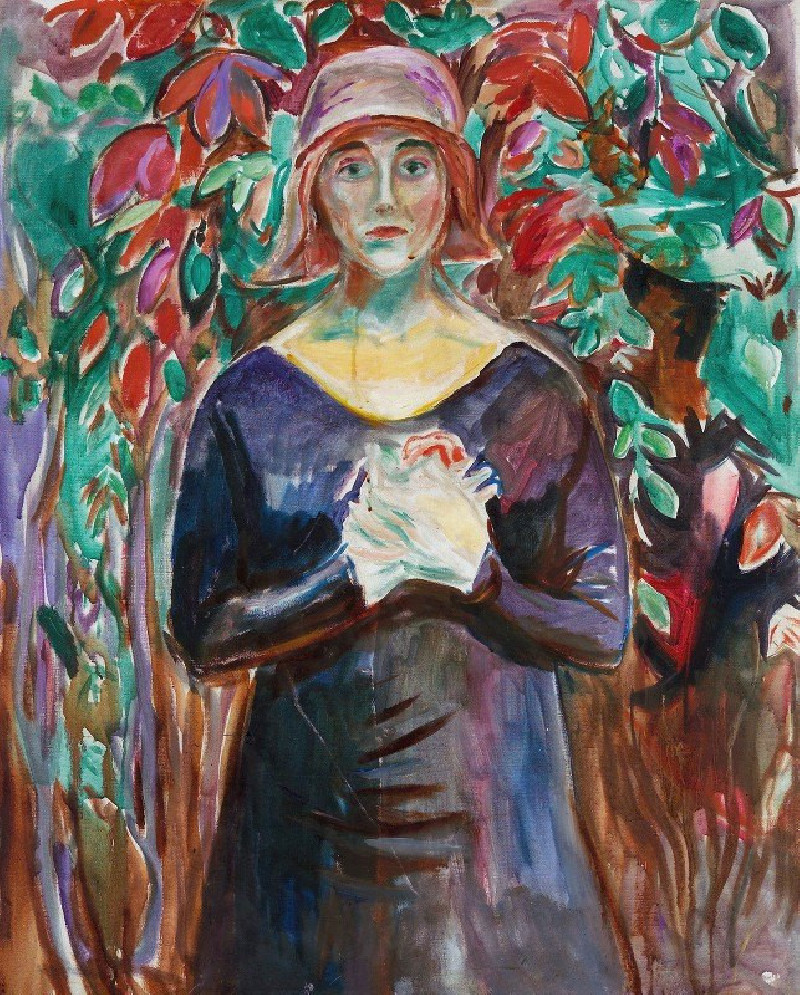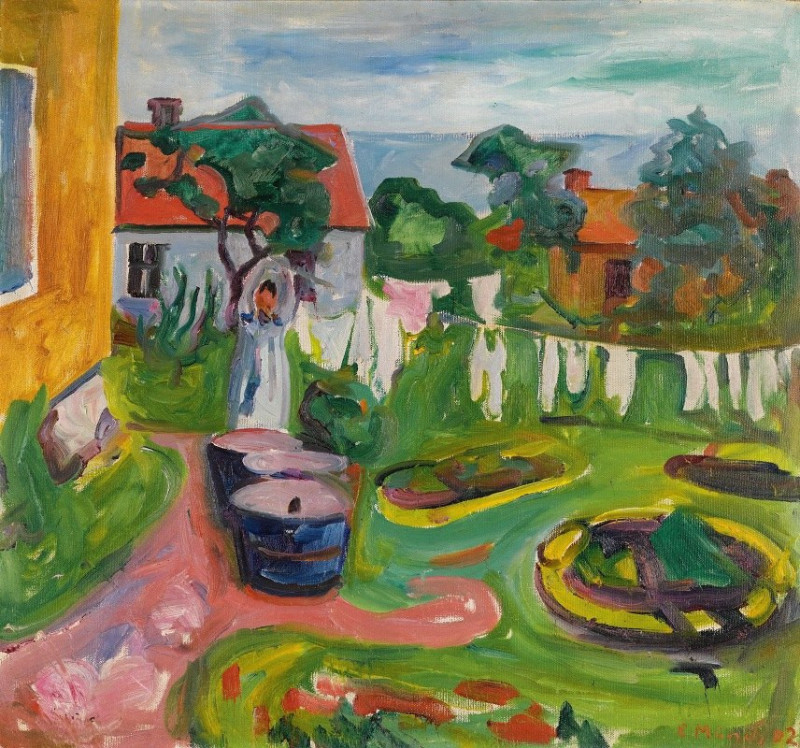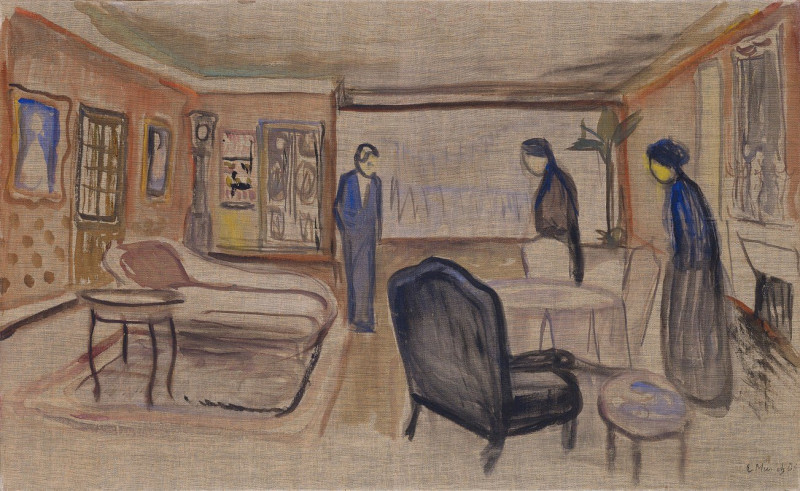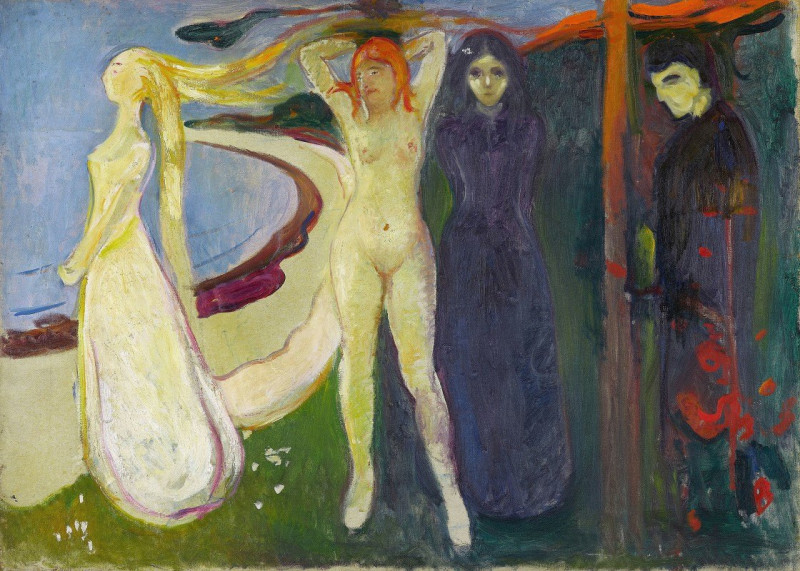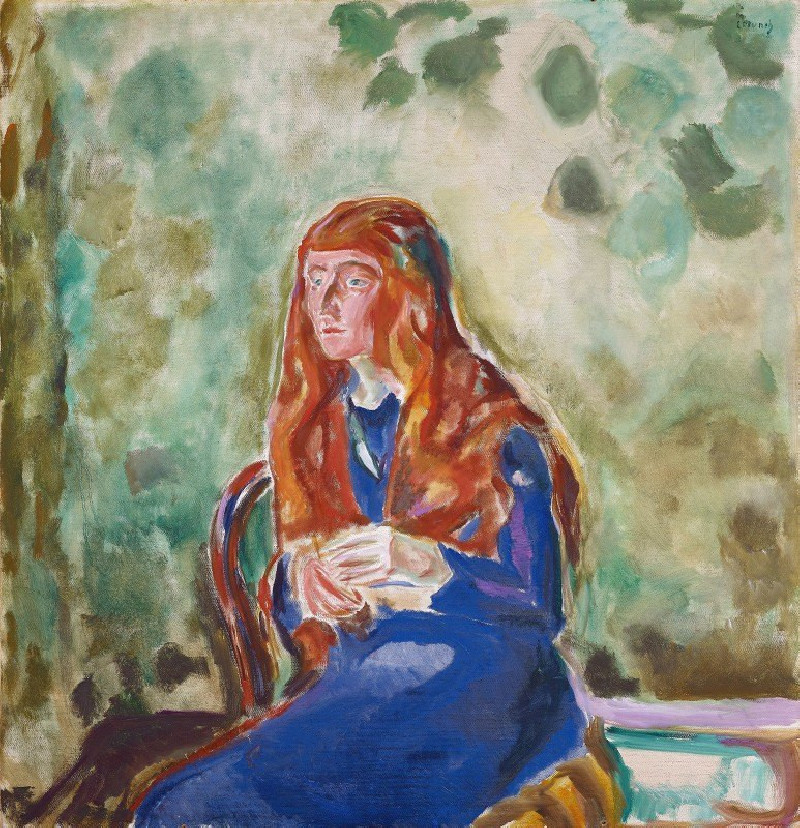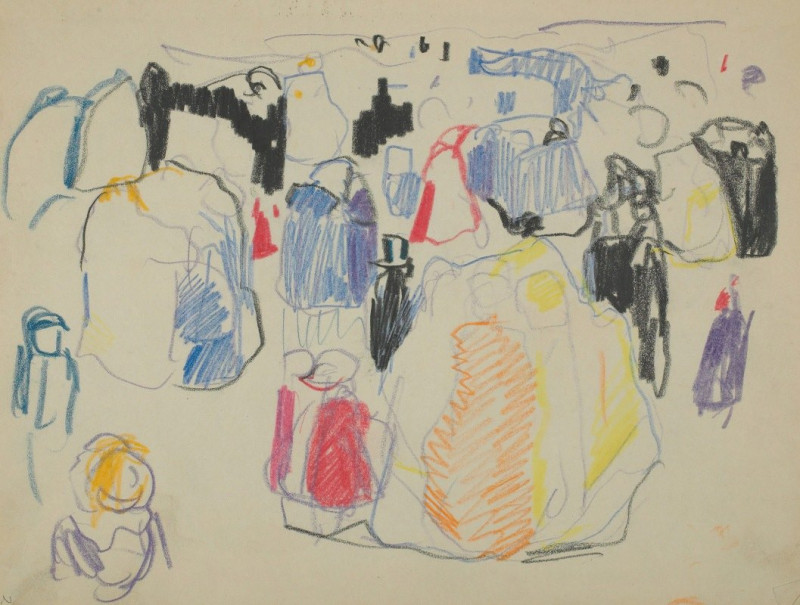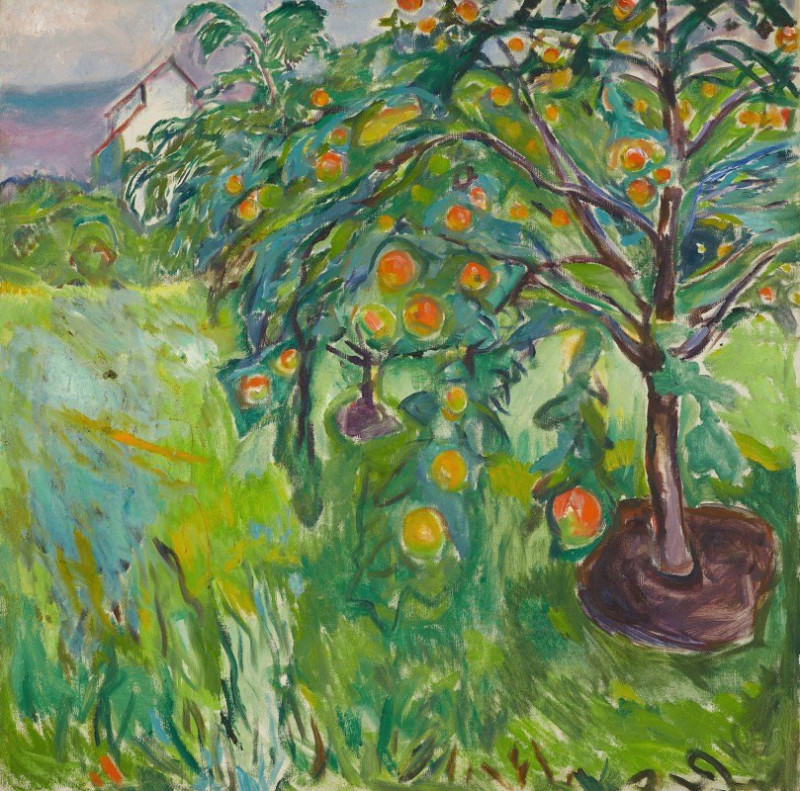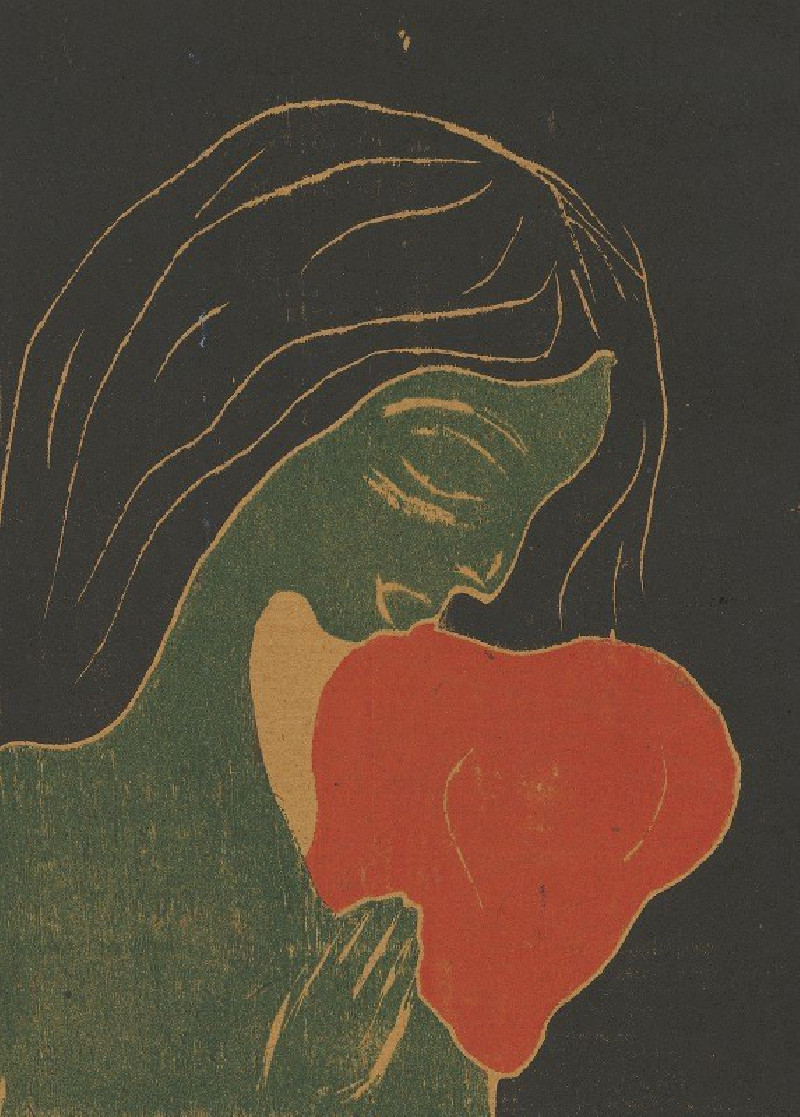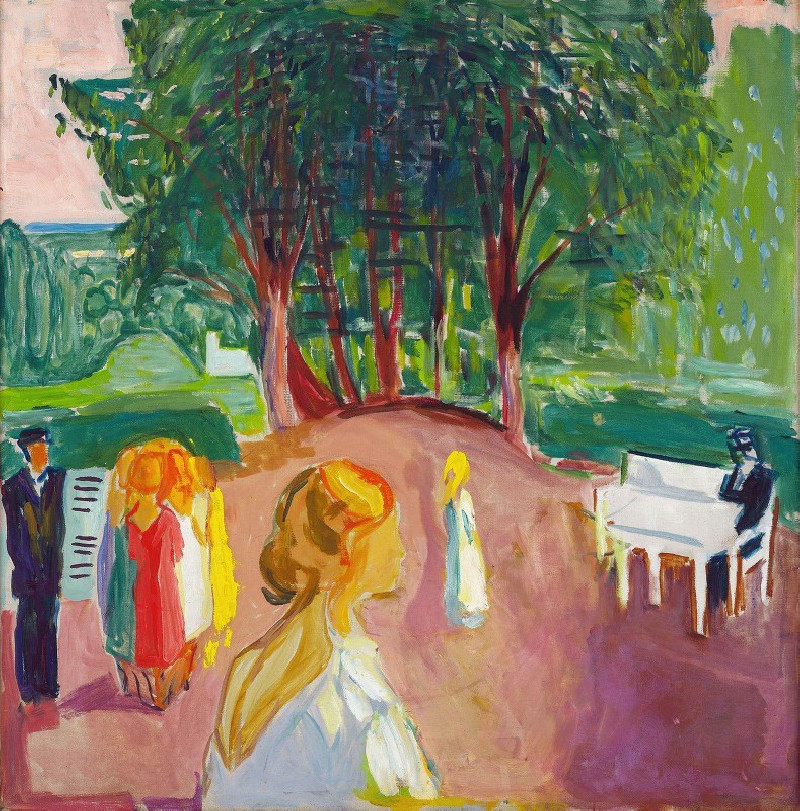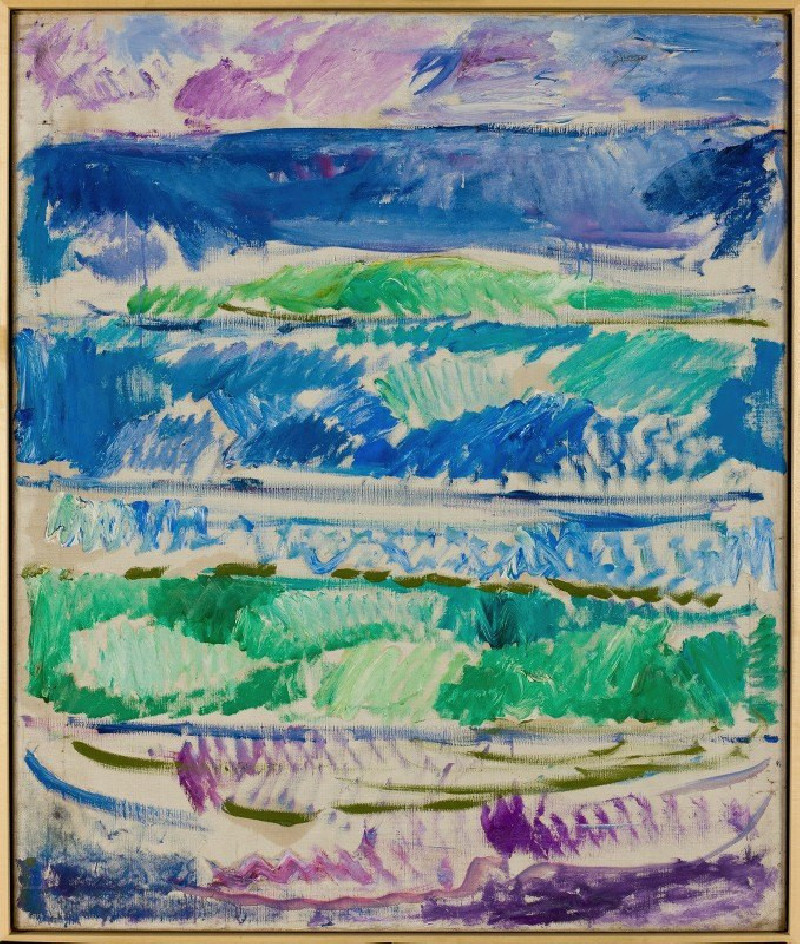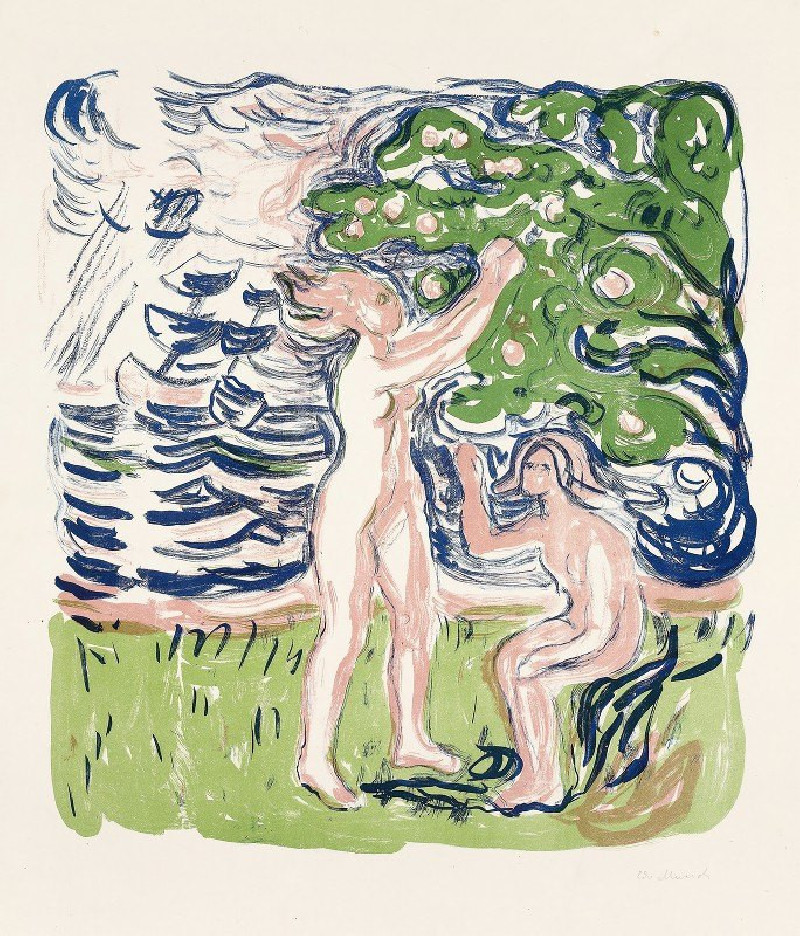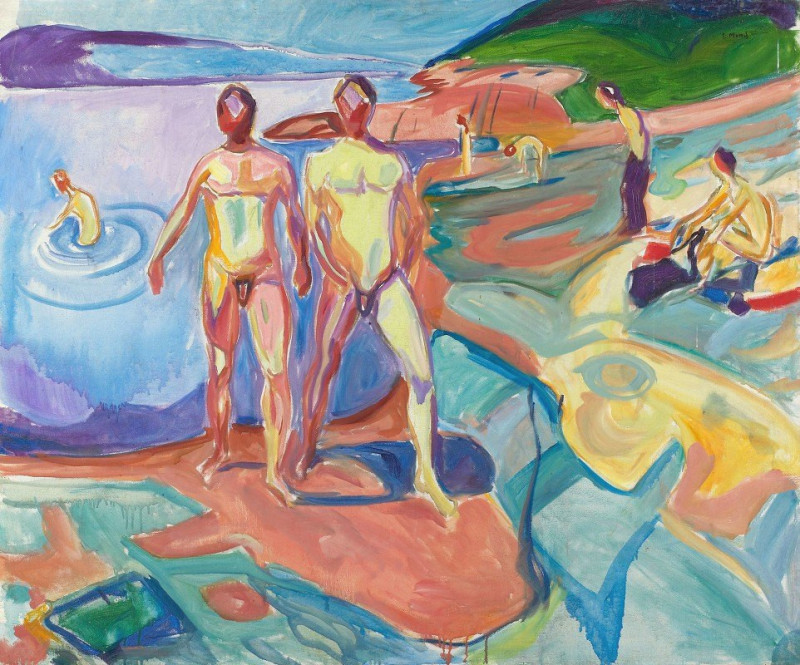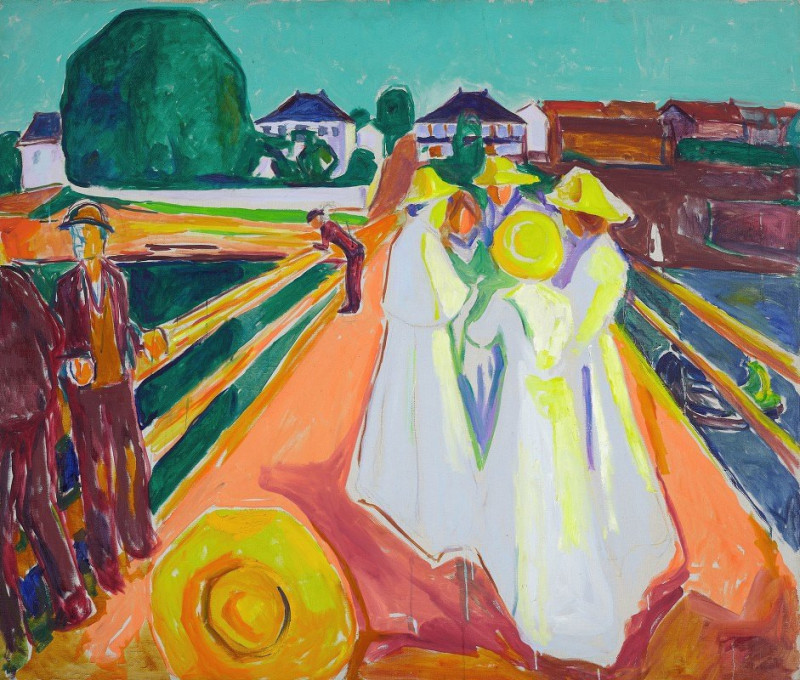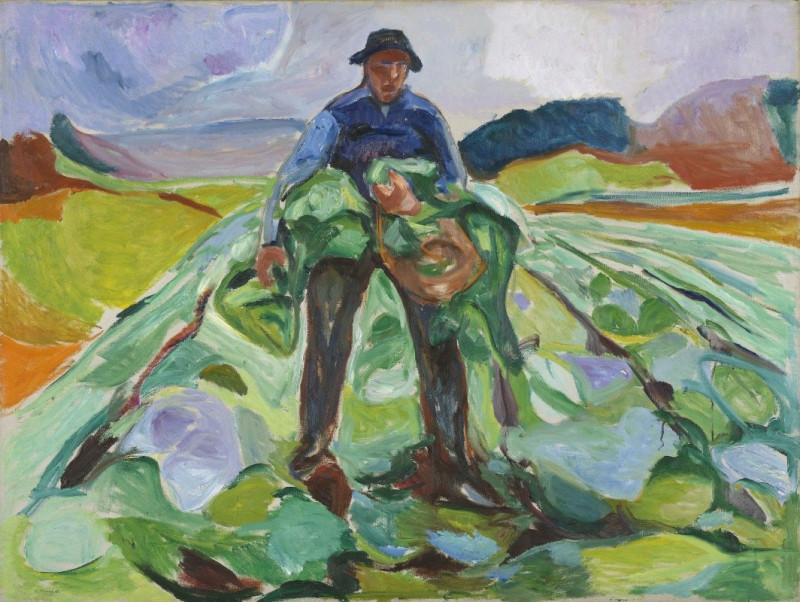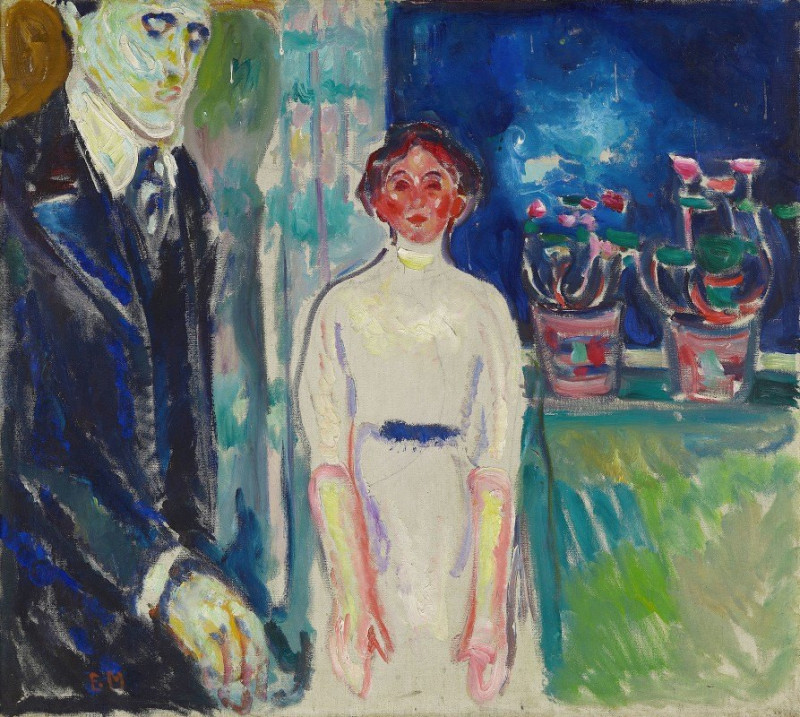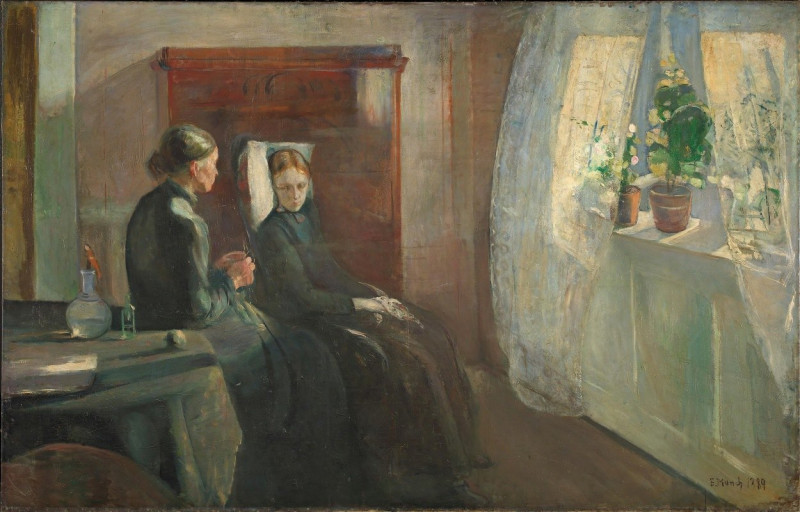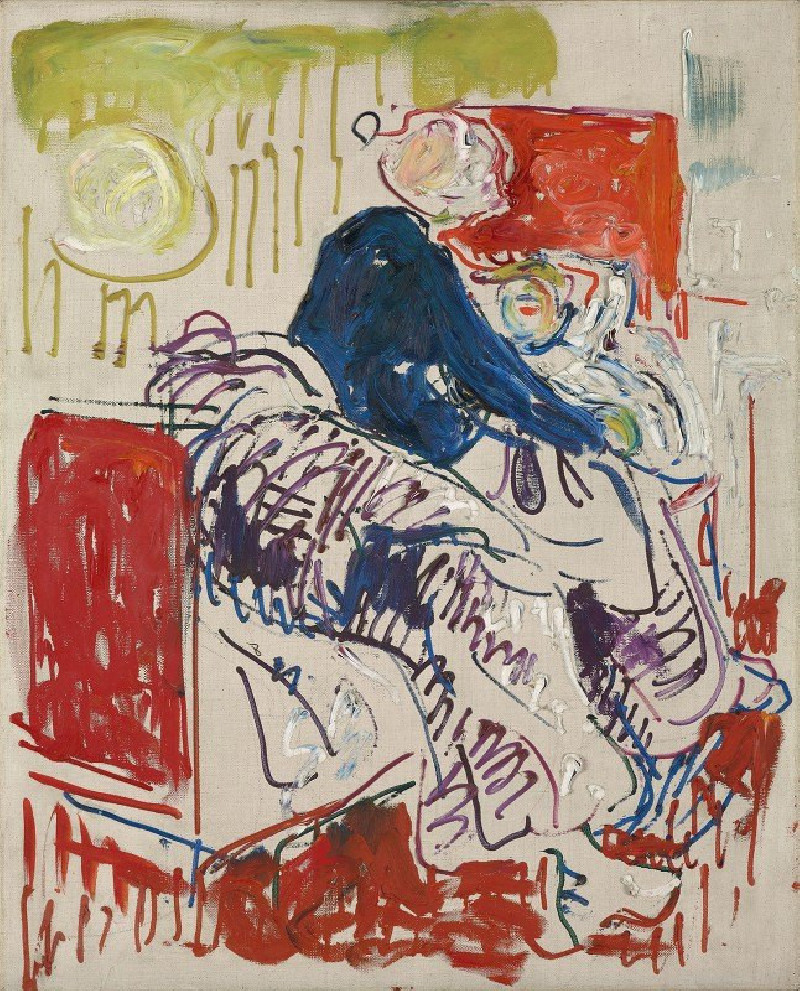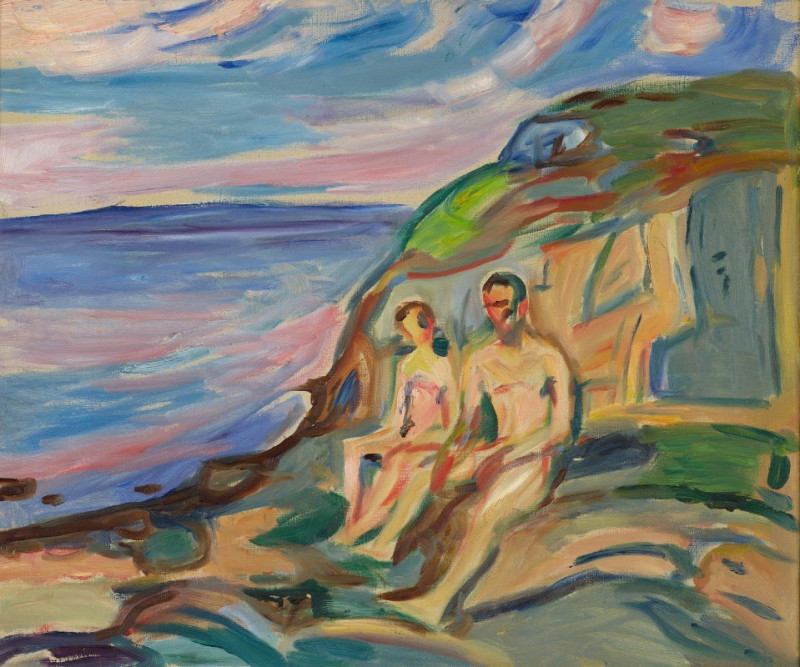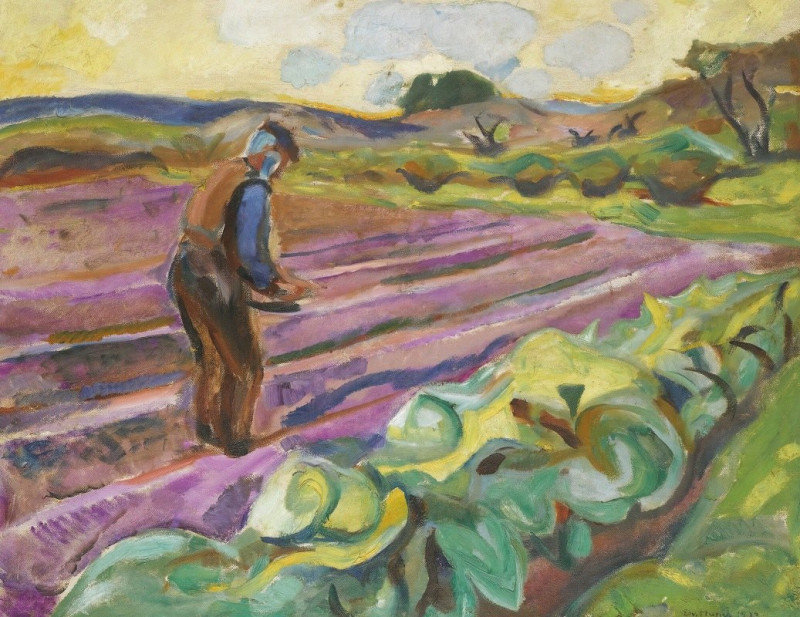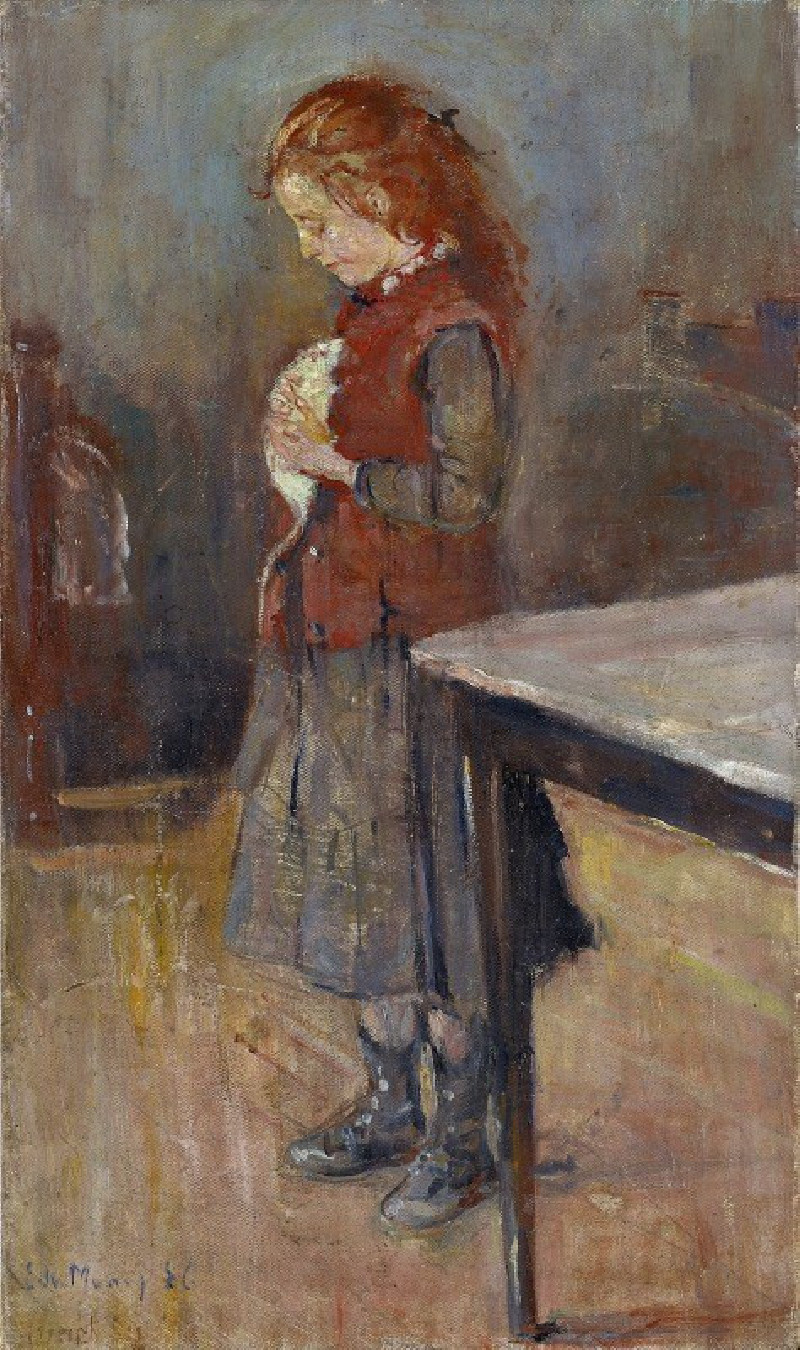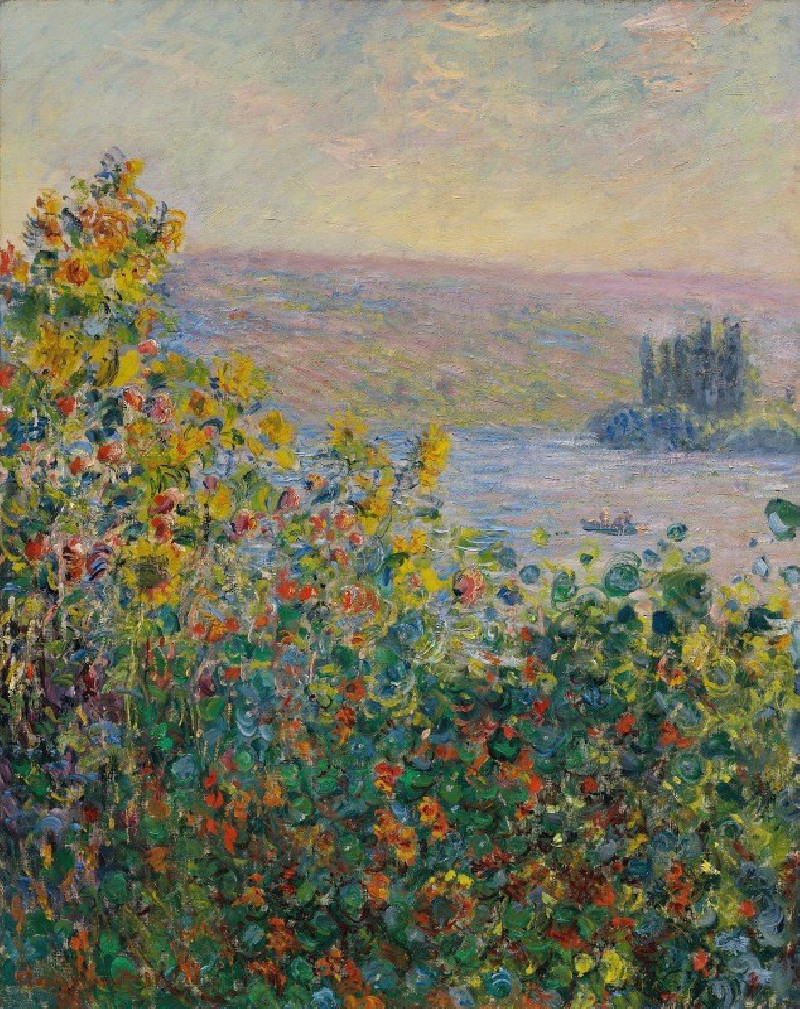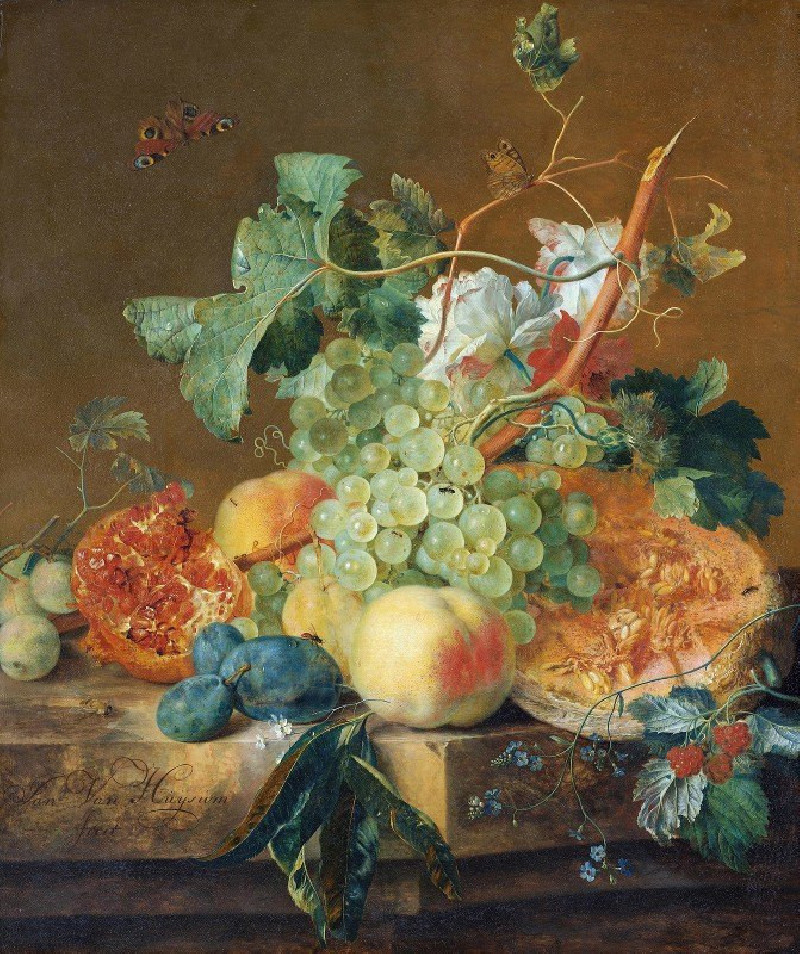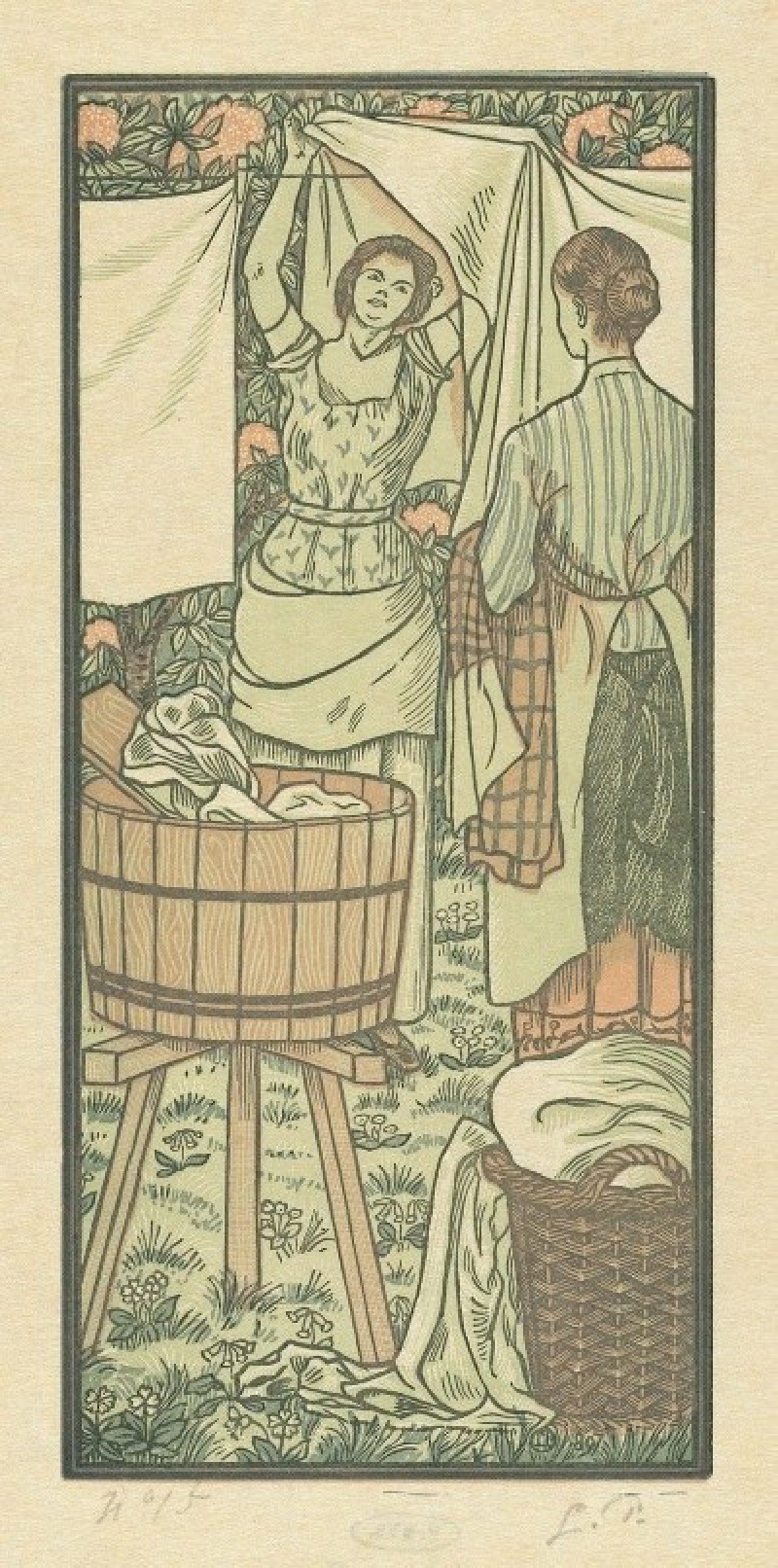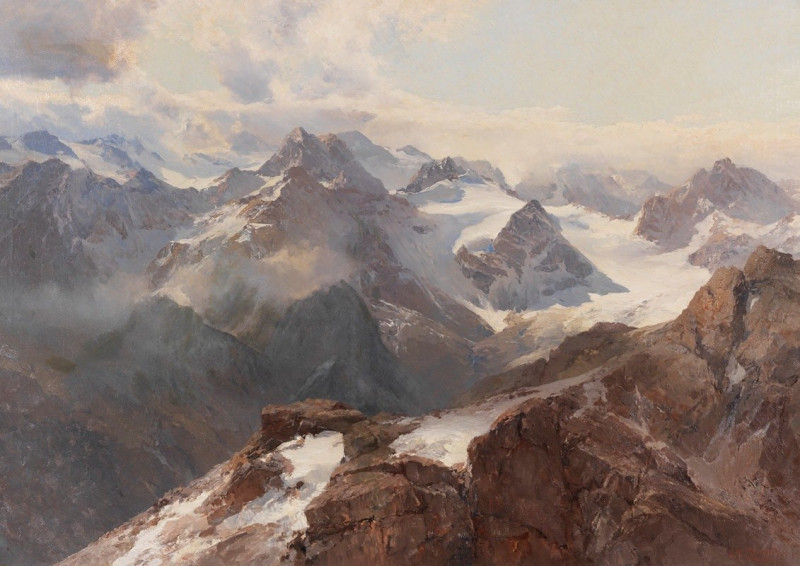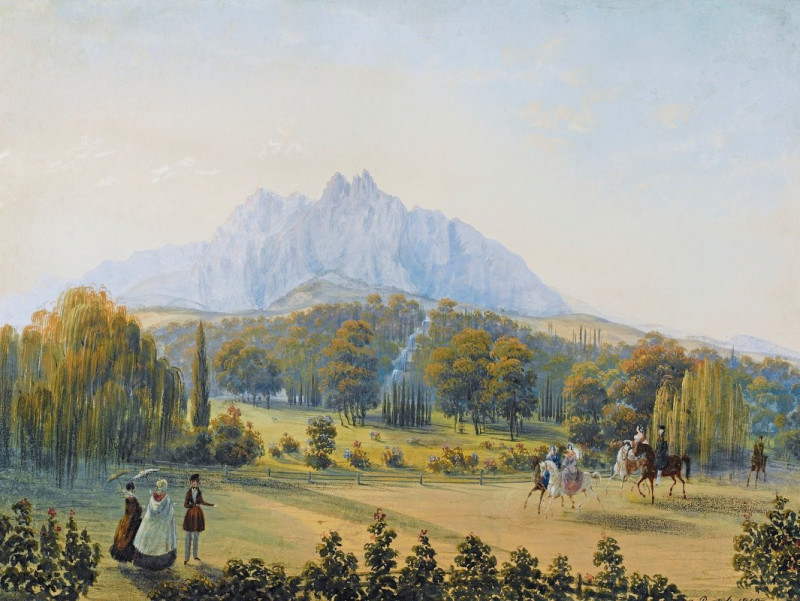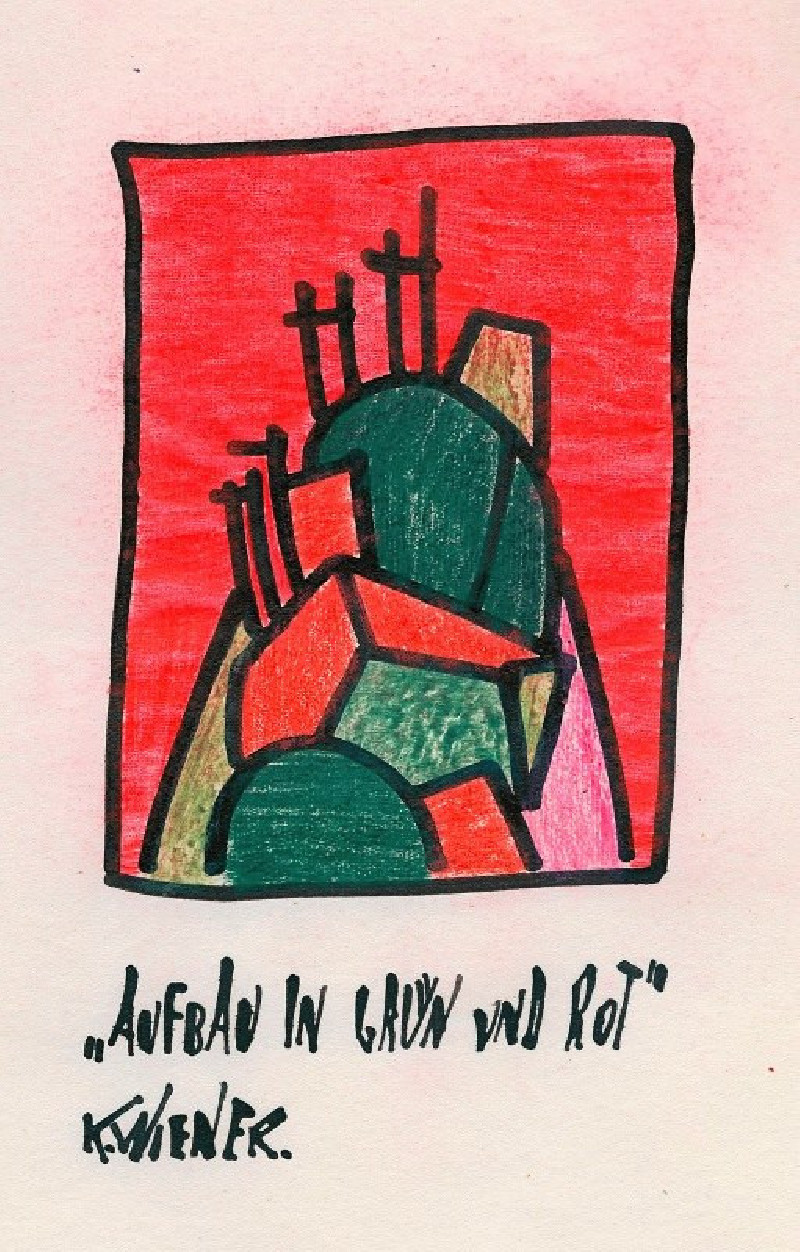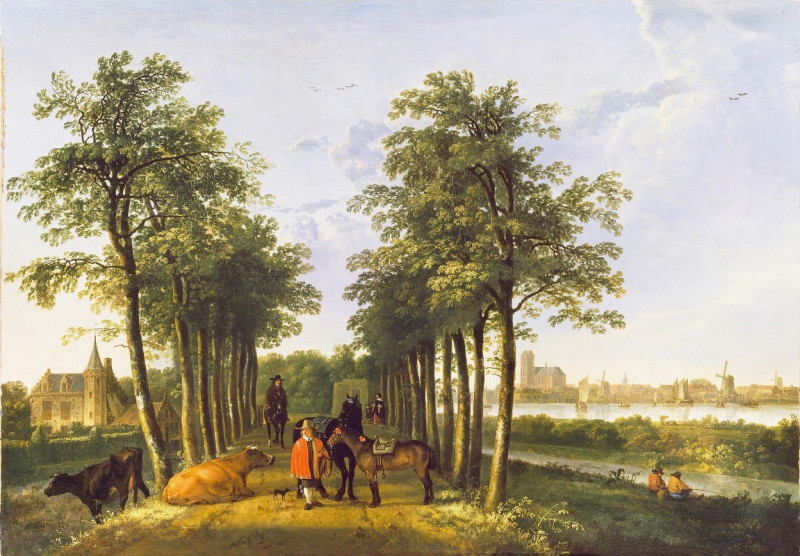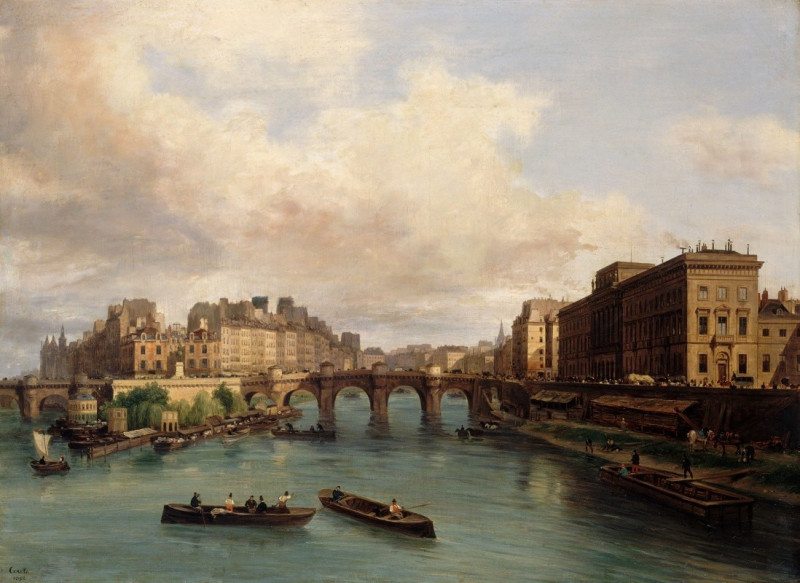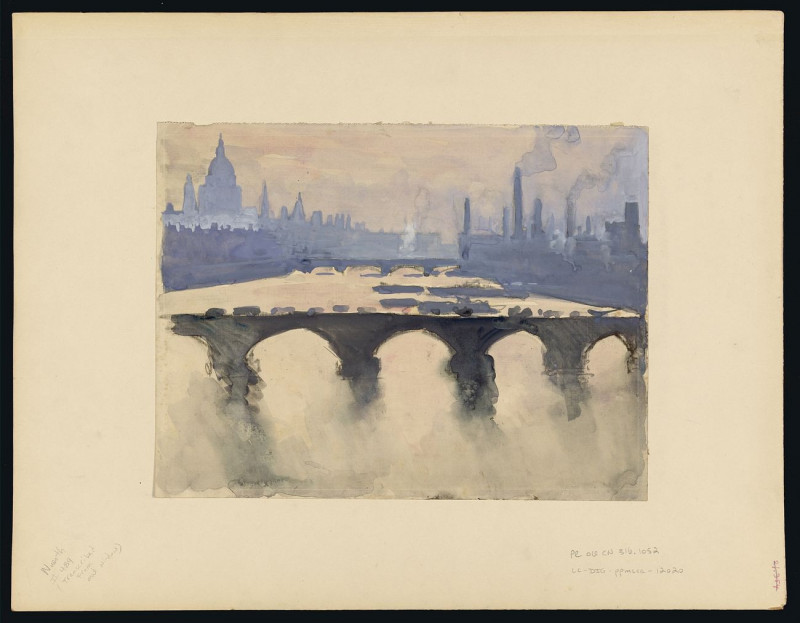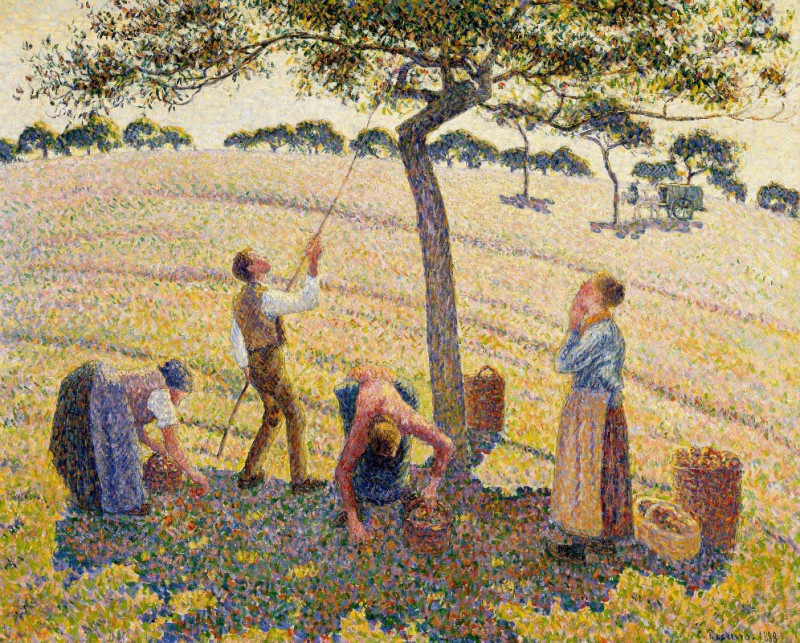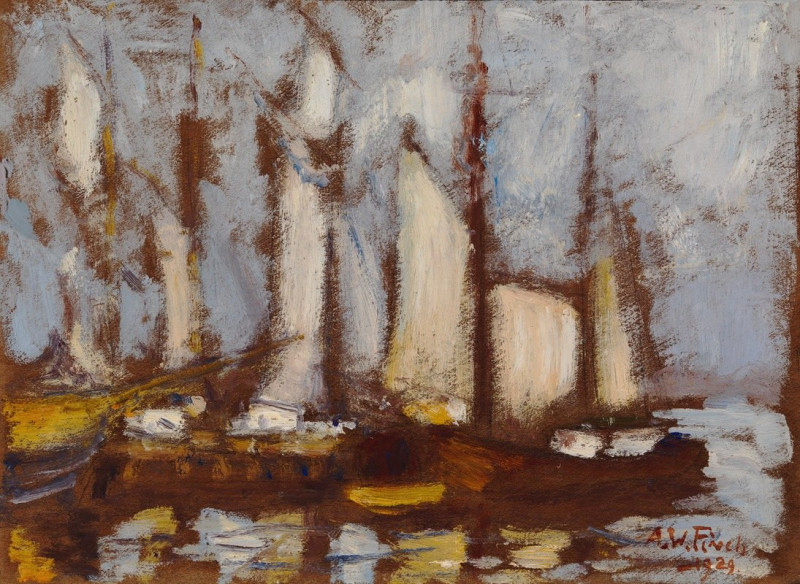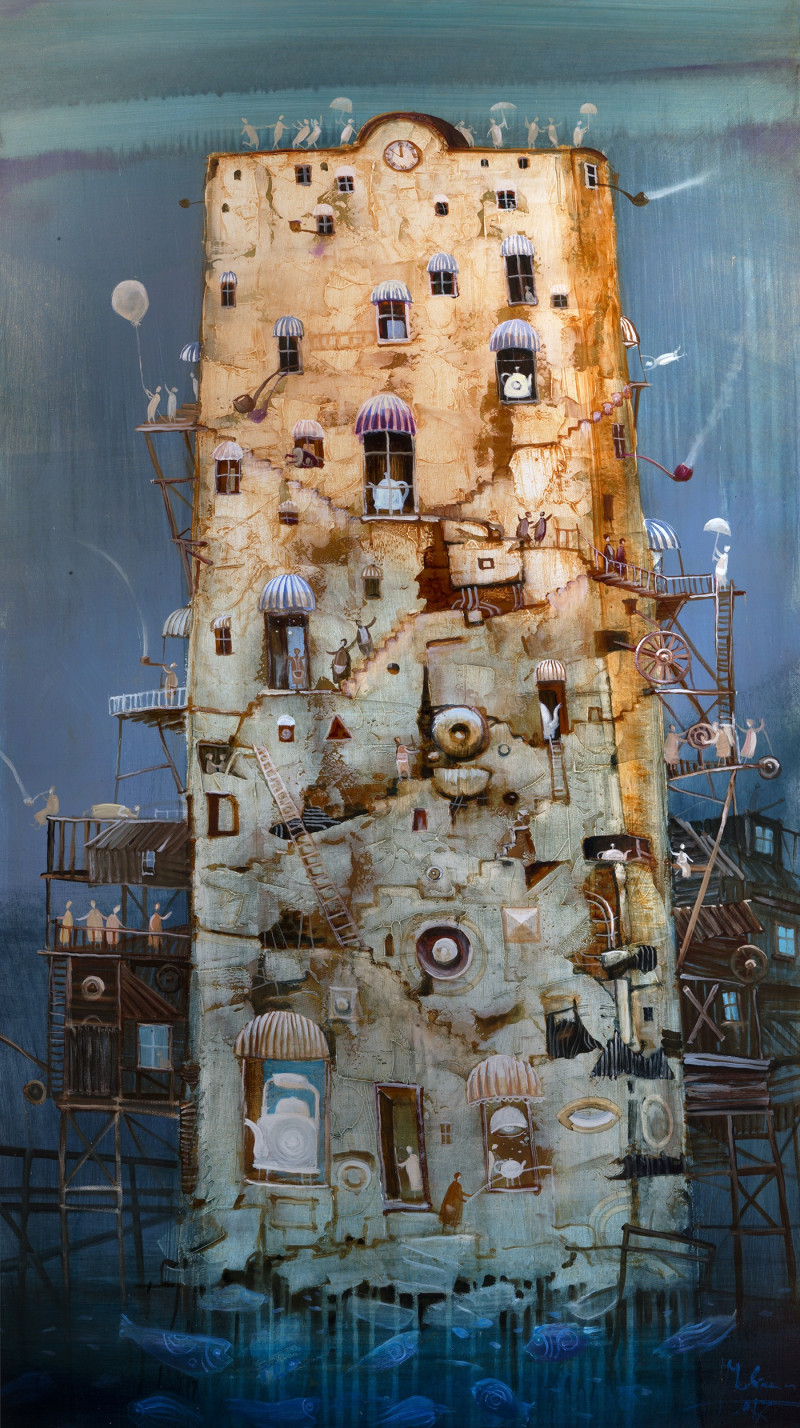Model in the Garden (1930)
Technique: Giclée quality print
Recommended by our customers
More about this artwork
"Model in the Garden" by Edvard Munch, painted in 1930, is a vivid and expressive artwork that captures a woman standing amidst a lush garden setting. In this painting, the central figure, the model, is dressed in a dark robe with a yellow collar, suggesting a sense of formality or contemplative elegance. Her hands are clasped together in front of her, and she holds what appears to be a white handkerchief or a small bundle of light-colored flowers. This gesture, combined with her direct gaze, conveys a sense of introspection or emotional depth.The background features an array of foliage with leaves in various shades of green, red, and purple, creating a vibrant yet somewhat chaotic backdrop that frames the model. The colors are rich and somewhat abstract, typical of Munch's style, which often balances between realism and expressionism. The use of bold and swirling colors around the figure emphasizes her emotional state and the overall intensity of the scene.The model's expression is contemplative and slightly somber, resonating with Munch’s characteristic exploration of human emotion and psychological depth. The painting communicates a complex interplay between the subject and her surroundings, suggesting themes of nature, introspection, and perhaps melancholy or pensiveness. Overall, "Model in the Garden" is a striking example of Munch's ability to convey deep emotional narratives through his unique artistic lens.
Delivery
Returns
Edvard Munch (12 December 1863 – 23 January 1944) was a Norwegian painter. His best known work, The Scream (1893), has become one of Western art's most iconic images.
His childhood was overshadowed by illness, bereavement and the dread of inheriting a mental condition that ran in the family. Studying at the Royal School of Art and Design in Kristiania (today's Oslo), Munch began to live a bohemian life under the influence of the nihilist Hans Jæger, who urged him to paint his own emotional and psychological state ('soul painting'); from this emerged his distinctive style.

